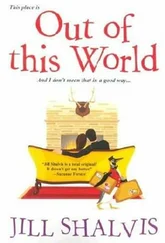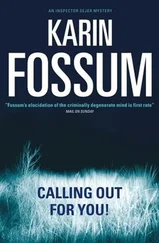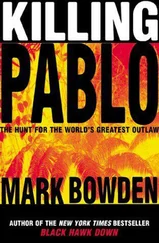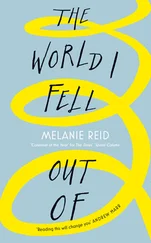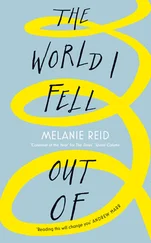To Die For
Is Fashion Wearing Out the World?
Lucy Siegle

 Copyright
Copyright
Fourth Estate
An imprint of HarperCollins Publishers Ltd. 1 London Bridge Street London SE1 9GF
www.harpercollins.co.uk
Copyright © Lucy Siegle 2011
Illustrations by Claire Meharg
The right of Lucy Siegle to be identified as the author of this work has been asserted by her in accordance with the Copyright, Design and Patents Act 1988
A catalogue record for this book is available from the British Library
All rights reserved under International and Pan-American Copyright Conventions. By payment of the required fees, you have been granted the nonexclusive, nontransferable right to access and read the text of this ebook on-screen. No part of this text may be reproduced, transmitted, downloaded, decompiled, reverse-engineered, or stored in or introduced into any information storage and retrieval system, in any form or by any means, whether electronic or mechanical, now known or hereinafter invented, without the express written permission of HarperCollins ebooks
HarperCollins Publishers has made every reasonable effort to ensure that any picture content and written content in this ebook has been included or removed in accordance with the contractual and technological constraints in operation at the time of publication
Source ISBN: 9780007264094
Ebook Edition © MAY 2011 ISBN: 9780007432530
Version: 2017-05-05
Epigraph
Hey Daisy darling
Don’t take it all as read Why don’t you ask a few more questions instead?
I know you think that everyone should be paid what they’re due But there are people in this world who don’t think like you do They don’t think like you do And some don’t think at all.
KARINE POLWART, ‘Daisy’,
from the album Scribbled in Chalk (2006)
CONTENTS
Cover
Title Page
Copyright
Epigraph
Introduction
Chapter 1 - Fat Wardrobes and Shrinking Style
Chapter 2 - Faster and Cheaper
Chapter 3 - Fashion Crimes and Fashion Victims
Chapter 4 - Tea, Sympathy and Auditing
Chapter 5 - In the Lap of Luxury
Chapter 6 - Fashion’s Footprint
Chapter 7 - Picking at Cotton
Chapter 8 - Woolly Thinking
Chapter 9 - Animal Prints
Chapter 10 - Lust for Leather
Chapter 11 - Dumped, Trashed and Burned
The Perfect Wardrobe
Chapter 12 - High-Street Thrills and Spills
Chapter 13 - Change Your Knicker Drawer, Save the World?
Chapter 14 - Buying Better Clothes
Chapter 15 - How Not to Buy
Notes
Acknowledgements
About the Author
Also by Lucy Siegle
About the Publisher
Introduction
Every year, around eighty billion garments are produced worldwide. Incredibly, when we buy one of them, we are able to learn very little about where it was made and assembled, and in what conditions. Consumers, retailers, designers and brands have a responsibility to the workers who make our fashion, but we’ve closed our eyes to a back story of exploitation and dangerous conditions. Every single one of our wardrobes is tainted. Seduced by the alliance of fast fashion with value prices, we’ve failed to notice that international trade rules and laws have their harshest impact on the most vulnerable in the supply chain. Where once cotton production was based on slavery, today’s fast fashion has brought the type of working conditions outlawed in the West at the turn of the twentieth century to every Developing World town with a fabric-processing or sewing facility.
I love fashion. But I want it to excite and inspire me, not to make me really, really angry. I have watched and aided and abetted as the fashion industry and consumers have sunk deeper and deeper into a cycle of exploitation of each other, the planet and the millions of workers who toil on the global assembly line in shocking conditions. But when I took a closer look at the true environmental and social impact of the seemingly innocuous and frippery-filled industry, I came to the conclusion that enough was enough.
For anyone labouring under the misapprehension that their individual decisions are too small and too insignificant to have any influence over the status quo, I want to set you straight. As the global population swells and the amount of natural capital, particularly untouched wilderness,
decreases, the planet is under unprecedented pressure. This means that it has never been more important to take wise individual decisions, as well as collective ones. It has never been more critical for us to consume with care and intelligence. It’s no secret that the present rates of consumption are unsustainable, and it will come as even less of a surprise that fashion’s are wildly out of kilter.
Why give fashion the time of day? Why not dress exclusively in old clothes and charity-shop finds? I’ve become pretty familiar with the school of thought that regards fashion as unnecessary and corrupt, the deep-green (and dare I say puritanical) doctrine that finds the very notion of fashion distasteful. But it is simply untrue to say that all fashion is superficial, needless and stupid, and to ignore the semiotics of style. The way we dress is fundamental to our self-expression.
But you can see where the distrust of fashion emanates from. We’ve recently shopped our way through a massive wardrobe upheaval, our buying patterns subverted by multinational businesses with the sole aim of making money for their shareholders. Almost overnight we have become used to consuming fashion with reckless, addicted abandon, buying more clothes than ever before, reversing centuries of fashion heritage, knowledge and understanding in the process. This is a revolution, and a largely unwelcome one. Strangely, given the extent to which we have altered our buying habits, there’s a lack of research of this consumerist phenomenon. Which is largely why over the past five years I’ve taken to carrying out my own unofficial surveys. Wherever I am, and whatever story I’m covering professionally, I usually spot a fashion story. For example, sent to Manchester to do an item on women ruining their feet by wearing high heels, I was more struck by the amount young women on limited incomes were spending on ‘it’ bags. Our fashion frenzies over the last decade tend to give away far more than just what is or isn’t on-trend.
It is a sign of the times that fashion regularly makes newspapers’ front pages or business pages, even if indirectly. Today’s stories are not just about Kate Moss or the size of Philip Green’s yacht (or both); they are about the more prosaic stuff of fashion, such as cotton. Occasionally this leads to some arresting headlines – ‘Cotton Bras are Rebounding!’ for example – but what it really confirms is that, with the exception
of the extractive industries and the food chain, few industries are as connected to the natural world as fashion. At its most simplistic, fashion is dependent on water, on crops such as cotton, and on a whole host of animal species. Yet the fashion industry has barely begun to factor in the consequences of its actions on habitat loss, shrinking biodiversity and climate change.
The good news is that there is a small window of opportunity in which to rescue fashion, the queen of all the creative industries. The rules are beginning to change. Garment workers are fighting back (because so many cannot continue to exist on the wages our wardrobes are willing to pay), and the conscientious consumer has the opportunity to fight alongside them. The huge retailers and brands need your custom, and the government wants you to keep shopping – but it is time to change the terms.
Читать дальше


 Copyright
Copyright